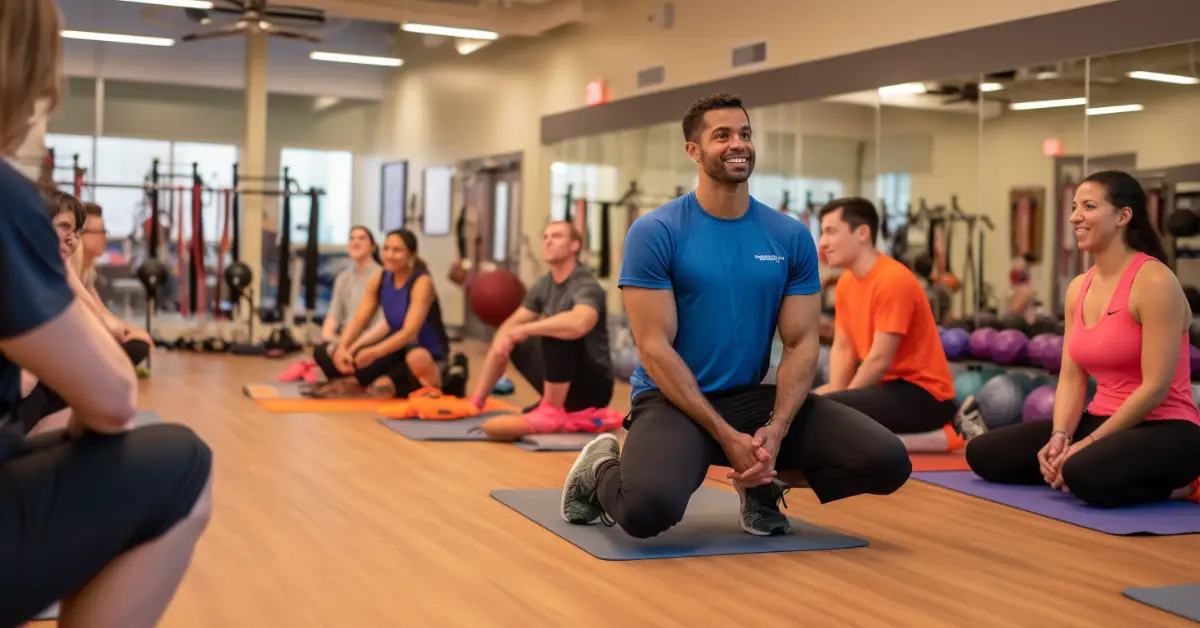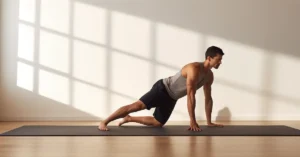📦 FREE Shipping
The Best Beginner Endurance Workout for 2024 (Start Today)

Embarking on a beginner endurance workout journey can be an exciting turning point in taking control of one’s health and fitness. When first starting, it’s crucial to assess your current fitness level to set realistic goals and prevent injury. Initially, the mere thought of endurance training might seem daunting, but I’ve found that starting with manageable steps keeps me motivated and hungry for progress.
The Best Beginner Endurance Workout Fot Better Health
Starting a beginner endurance workout can be both exciting and daunting. I always recommend a combination of cardiovascular endurance workouts and strength training. Here’s a simple plan for beginners:
Monday:
- Walking: I usually begin with a brisk 30-minute walk to get my heart rate up.
- Squats: After the walk, I do two sets of 10 squats to strengthen my legs.
Wednesday:
- Cycling: A moderate 20-minute bike ride works wonders for building leg endurance. If you already have an indoor bike, a spinning endurance workout will bring the same results.
- Push-ups: I follow up with two sets of 5-10 push-ups to build upper body strength.
Friday:
- Jogging: A slow and steady 20-minute endurance running workout increases my lung capacity and endurance.
- Plank: Then, I hold a plank for 30 seconds to 1 minute, repeating it twice to strengthen my core.
Remember, the key is consistency. I make sure to listen to my body and avoid pushing too hard too soon. Hydration and proper nutrition also play a vital role in a beginner endurance workout. I ensure I drink plenty of water and eat a balanced diet.
Setting Up Your Workout Plan
When I start a new workout plan, my focus is on crafting a routine that aligns with my fitness goals, while ensuring I’m selecting a beginner endurance workout that will foster consistent growth and improvement in my endurance.
Identifying Fitness Goals
My goals are the north star of my beginner endurance workout plan. I take the time to clarify what I want to achieve, whether it’s running a certain distance, improving my race times, or simply being able to exercise for longer without fatigue. These goals must be specific, measurable, attainable, relevant, and time-bound (SMART). For example:
- Specific: I aim to run 5K without stopping.
- Measurable: I want to improve my current 5K time by two minutes.
- Attainable: I will gradually increase my running distance each week.
- Relevant: Running longer distances will boost my cardiovascular fitness.
- Time-bound: I plan to achieve this within the next three months.
Choosing the Right Exercises
I’m careful to select exercises that will not only help me achieve my endurance goals but also keep me interested and engaged in my beginner endurance workout program. A diverse range of activities can prevent plateauing and contribute to overall fitness growth. Here are the types of exercises I might include in my plan:
- Steady-State Cardio: Long-distance running, cycling, endurance swim workouts.
- High-Intensity Interval Training (HIIT): Alternating between bursts of high-intensity activities and short rest periods.
- Strength Training: Incorporating at least two days of weight training (like Lower Body CrossFit Workouts) to improve muscular endurance.
- Flexibility and Mobility Work: Yoga or stretching routines to reduce injury risk and improve recovery.
Every week, I make sure my workouts are structured to ensure I’m progressively challenging my body while allowing sufficient time for recovery. Consistency is key; skipping my workout is not an option if I want to see results. You can also think about getting yourself an accountability partner.

Mastering Workout Fundamentals
When I approach a beginner endurance workout, I focus on the bedrock of exercise success: proper form and adequate warm-up and cool-down routines.
Importance of Proper Form
My exercise performance significantly improves when I emphasize the quality of my movements over quantity. By maintaining proper form during reps, I engage the correct muscles, which helps to maximize benefits and reduce the risk of injury.
Proper Form:
- Stance: Stable and shoulder-width apart.
- Spine: Neutral, with no excess arching or rounding.
- Joints: Aligned, moving smoothly without locking.
Maintaining form becomes more challenging as fatigue sets in, so I pay attention to keeping my intensity at a level where I can perform all my reps without sacrificing form.
My tip:
Julian
Author at PlanetGains
I’ve learned that recruiting the right muscles by practicing good form isn’t just safer, it makes my beginner endurance workouts more efficient and effective.
Incorporating Warm-Up and Cool Down
Starting my workout with a warm-up preps my body, increasing blood flow to my muscles and improving my flexibility, which is crucial for endurance.
Warm-Up Routine:
- Duration: 5-10 minutes
- Focus: Light aerobic activity (e.g., jogging, cycling)
- Stretching: Dynamic exercises to boost mobility
After my workout, a cool down gradually returns my body to a resting state. This helps my muscles to recover and reduces soreness.
Cool Down Routine:
- Duration: 5-10 minutes
- Focus: Gentle movements (e.g., walking)
- Stretching: Static stretches to relax muscles
These warm-up and cool-down rituals are vital; they serve as bookends to my beginner endurance workout, ensuring I begin and end on a positive note, keeping my muscles flexible and my body in tune for the endurance journey ahead.
Free PDF Workout Plans For You.
Are you in need of motivation? Here are some powerful workout plans with PDF downloads you can choose from:
— Pamela Reif Workout Plan
— 30 Day Peloton Workout Plan
— Beginner Calisthenics Workout Plan
— Andy Galpin Workout Plan
Cardio and Endurance Training Essentials
When I begin a journey to enhance cardio and endurance, the primary focus is on selecting the right exercises and gradually increasing intensity to improve my heart rate management and calorie burn over time.

Exploring Cardio Exercise Options
I have found various cardio exercises that are effective for building endurance. Here’s a breakdown of popular options:
- Walking: An easy starting point for beginners, it’s low-impact and a simple way to get my heart rate up.
- Treadmill: Offers a convenient, all-weather option with adjustable incline and speed.
- Cycling: Provides a fantastic lower-body workout that I can enjoy outdoors or on a stationary bike.
- Rowing: Engages my upper and lower body for a full cardio challenge.
- Stair-Climbing: A vigorous exercise that targets the legs and glutes while rapidly increasing my heart rate.
- Jump Rope: With jump rope endurance workouts you can get stunning results with limited time input.
Building Endurance Over Time
Improving endurance isn’t something that happens overnight. Here’s my strategy for effective progression:
- Start Slow: I begin with low-intensity workouts to get my body used to the activity.
- Incremental Increases: Each week, I aim to increase the duration or intensity of my workouts by a small, manageable amount.
- Monitor Perceived Exertion: I listen to my body and adjust my workouts based on how hard I feel like I’m working, aiming to gradually push my comfort zone.
To track progress, I focus on these parameters:
- Heart Rate: I use a monitor to ensure I’m working within my target heart rate zone.
- Calories Burned: Keeping an eye on the calories I burn is motivating and a good indicator of my growing endurance.
- Consistency: I make a schedule and stick to it, ensuring each cardio workout is a step towards greater endurance.

Monitoring and Adjusting Your Workout
When I start a new beginner endurance workout routine, keeping an eye on my progress and being flexible with my training plans are crucial. It’s the best way to ensure that I’m moving forward effectively, and it gives me the confidence to make necessary changes that foster growth without risking overload or injury.
Tracking Your Fitness Progress
I make it a point to track my progress, which helps me maintain momentum and build confidence. I do this by logging my workouts, including distance, time, and intensity. Not only does this show me the hard data, but it also gives me insight into my perceived exertion and any health conditions that might affect my training. I use a simple table to track key metrics:
Adjusting Workouts as You Gain Strength and Stamina
As my strength and stamina increase, I adjust my workout routine accordingly. I listen to my body, and if I find myself breezing through sessions that used to be challenging, I know it’s time for a change. I may add more distance to my CrossFit Track Workouts or implement high-intensity intervals to push my limits. The talk test is a helpful tool here; if I can converse easily during what should be a moderate workout, it’s likely time to step up the intensity. Changes I make are gradual and carefully considered to ensure continuous improvement without injury.
My Experience with a Beginner Endurance Workout
Stepping into the world of endurance training some years ago was both exciting and daunting for me. Back then, I decided to commit to a beginner endurance workout routine, which focused on consistent, gradual progress.
I started with brisk walking, which transitioned into short intervals of jogging. My legs would ache, but I felt a sense of accomplishment with each session.

In this phase, I was jogging more consistently. Breathing exercises helped me manage my pace and endurance. Surprisingly, I began looking forward to these beginner endurance workouts, feeling more energized throughout the day.
Challenges Faced:
- Muscle soreness
- Brief plateaus in progress
- Learning to pace myself
Despite the obstacles, consistency was key. With time, distances that once seemed impossible became manageable. My endurance noticeably improved, and so did my confidence. Sharing this journey has been important to me, as it might inspire others to take that first step towards a healthier lifestyle. Nowadays I run half marathons and marathons, love long bike rides and find joy in triathlon. Not to brag, just to motivate you that everything is possible. 🚀
Frequently asked questions about beginner endurance workout
What is the 15 15 15 workout class?
The 15 15 15 workout class typically consists of three 15-minute segments that focus on different fitness aspects: strength, cardio, and flexibility or core work. This structure is designed to provide a balanced workout in a short amount of time, which is ideal for a beginner endurance workout.
What is the best cardio exercise for beginners?
The best beginner endurance workout is often low-impact activities that can be sustained over a period of time such as: Walking, Swimming or Cycling. Each of these activities helps raise your heart rate without putting too much stress on your joints.
What exercises improve endurance?
To improve endurance, consider incorporating a mix of: Aerobic exercises, Strength training and Interval training. A beginner endurance workout is also beneficial for progress.
How long should an endurance workout be?
For a beginner endurance workout, it can start at 20 to 30 minutes and gradually increase as fitness improves. It’s important to listen to your body and not push too hard too soon.
Is it OK to do endurance training everyday?
It’s generally recommended to allow a day of rest between endurance training sessions to let your body recover, especially for a beginner endurance workout routine. Overtraining can lead to injury, so it’s crucial to build up frequency and intensity gradually.
Are you excited to try your first beginner endurance workout? Let me know in the comments below. Make sure to also read about muscular endurance workouts and wh adding salt to pre workout is actually benefitial.





